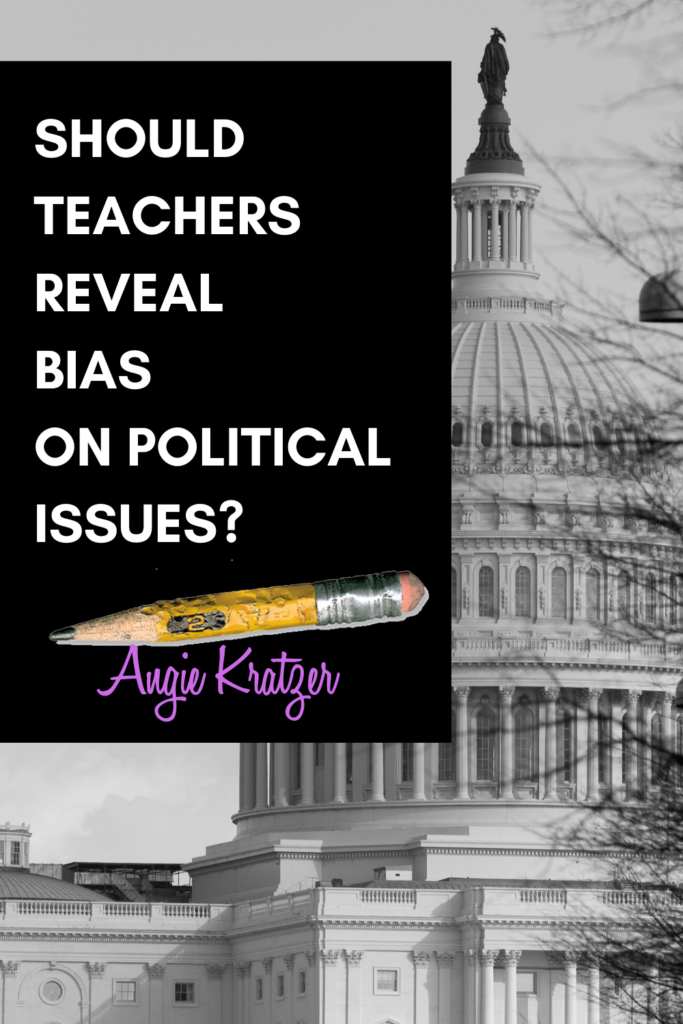
Before you read on, take two minutes to study this image. Although students would never see such an image on Question 1 (too emotionally charged), there is value to be had in exposing students to current political cartoons. If you use this one in your classroom, give students time to study as well. Let them find Donald Trump’s hairstyle in the match flame. Before landing on the artist’s intent, let the ideas flow as students catch details. Once you start talking, your own interpretation (and possibly bias) might seep out.

A Bit of Controversy
I recently posted this cartoon in an AP Lang Facebook group, and within an hour, the comments BLEW UP. Members were debating teacher bias and whether or not we have a responsibility to show more than one perspective of an issue. The conversation got a bit heated (see what I did there?), but it raised some excellent questions.
If I introduce a political cartoon, am I morally/ethically/pedagogically required to offer a second viewpoint? A third? A fourth? Does my instruction have to be balanced into order to be effective?
Do I need to make clear that controversial issues are complex, non-linear, and multi-faceted?
Can I guide my students through image analysis and hold back my own bias? Is there a point at which it’s ok to reveal what opinion I hold? I must say that I’m a terrible liar, and I have NO poker face. I doubt very much if I would last long with the cartoon above. As the mother of an Hispanic adopted child of Puerto Rican descent, I’m a bit invested in all the goings on right now.
I don’t have firm answers to all the questions above, but I am sure of this: My job is to train my students to seek and understand other perspectives. I’m not sure I have to provide those perspectives myself. It is important, in the course of a unit, to come at different ideas from different directions, but I don’t think it’s necessary or even possible to give every viewpoint of every issue. For example, if we’re looking at a piece arguing that Donald Trump should be credited for the upturn in our economy, we can look just at that one article or op-ed. We can outline the argument, find the logical fallacies, discuss the counterarguments, and evaluate the quality of the evidence. The issue isn’t the issue. It’s what we do with the piece.
Questions to Ask
Back to the image. I would like to share some questions to ask and some ideas that surfaced on this Facebook post:
*What is significant about the shape of the match? *Who is the match? *Who are the bombs? *What expectation is implied? *Why are the bombs angry? (Janice Hoy) *What if a teacher flipped the script and had students discuss how the rhetoric would change if the bombs were candles? (Ivy LaFaye) *How could we train students in the formation of rebuttal using this cartoon? (Kim Dickens) *How would this cartoon be different if it were drawn in 2019 instead of 2018? *Could the teacher be the match and the bombs the students? (Jim Haisler) *Could each “side” see this as satire criticizing the other? (Audrey Emm)
Looking for Balance
What if we want to create balance of perspectives? Finding conservative political cartoons is a challenge when the sitting president is a controversial republican, but Tina James found this collection. Another teacher recommended AllSides.com, and I use ProCon.org.
Jodi Rice, FB group sage, found and posted this 2017 article from NCTE: There is No Apolitical Classroom: Resources for Teaching in these Times. The piece offers resources and insight on an English teacher’s responsibility in addressing racism and injustice, and I’m stealing the author’s quote callout.
“I swore never to be silent whenever and wherever human beings endure suffering and humiliation. We must always take sides. Neutrality helps the oppressor, never the victim. Silence encourages the tormentor, never the tormented.”
Elie Wiesel, 1986 Nobel Peace Prize Acceptance Speech
I’m with Elie Wiesel. I for one will not sit on my hands or cover my mouth, even when I’m in the classroom. I will continue to point out logical fallacies, distracting rhetoric, and fake news. I WILL teach my students to pay attention to the message, the messenger, the context, the exigence, and what is not being said. And I will teach them how to recognize matches.
If you’re ready to jump right in and use this cartoon in your classroom, hop on Angie’s email list and you’ll immediately get in your inbox two lesson plans on analyzing images. Every week or two, look for tips, tricks, freebies, resource update announcements, and a meme or two. Unsubscribe at any time.


